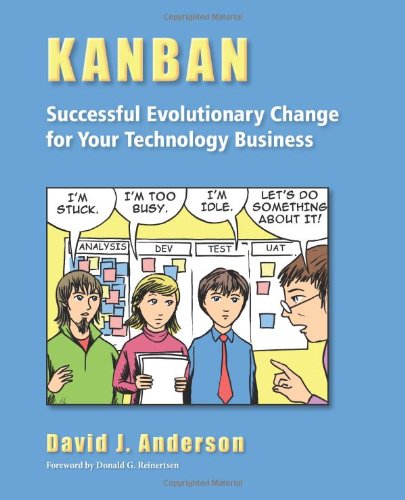Course Passionate Product Ownership
Presented by Jeff Patton
Organised by SoftEd
Held in the Hilton Hotel Brisbane
Overall: 5 Stars
The venue, room and training materials were all prepared ahead of our arrival. The room was set up for five groups of five people. Each table was stocked with extensive pens, paper, index cards, sticky notes, printed notes, etc. There was also the book ‘Inspired’ by Marty Cagan and a USB drive with over 500Mb of material including slides, cheat sheets, guides, articles, templates, and all of the videos that he showed to us.
The catering was timely, organised and tasty, well done to the Hilton. Eating lunch in the recently refurbished restaurant was pleasant and hassle free. They took our lunch orders at morning tea and served it to us promptly on our arrival at lunch time. The facilities were great however I was not a big fan of the chairs.
Jeff is an excellent presenter, facilitator and educator. He made it all look so easy to keep a diverse group engaged and focused for two solid days. His extensive knowledge and real world experience in many different contexts shines through as he provides examples and answers questions with ease. Combining all of his skills he was able to keep us on schedule while still addressing the widely varying needs of the audience (different contexts, skills and experience). It was very impressive to see Jeff in action.
There were practically no slides projected, he used spoken word combined with a projection of the drawings and notes that he made in real time. This approach of projecting the web cam of his drawing was very engaging. Jeff made extensive use of games to get us to experience our new knowledge and techniques in action. Towards the end of the course he gave away a copy of ‘Game Storming’ by Dave Gray. A quick flip through this book (one of my colleague one it) told me that Jeff has used plenty of ideas from this book in his course preparation and deliver. It is going onto my must read list.
Discussion regarding Scrum was limited and rightfully so. I have heard of others attending CSPO courses that are practically the same as a CSM course.
The vast majority of the two days was spent on the Discovery Phase, understanding product goals, target outcomes, users, interactions, activities and business prioritisation. There was only a small amount of content and on planning and co-ordination. Jeff is focused on building the right product, which is exactly the focus that a Product Owner should have.
Overall it was the best course I have ever attended. The change at work has been profound with many of our attendees now using techniques from the course in our day to day work. There are also plans to consider rolling out more of the approaches and techniques with our upcoming releases.
I highly recommend this course for all managers, coaches, scrum masters, business analysts and of course product owners.
Photo by: Kris Anderson
@andrewrusling Working as an Agile Coach allows me to learn and grow on a daily basis. This is my chance to share some of that new found knowledge
Friday, March 30, 2012
Saturday, March 24, 2012
Keeping track of great agile books
Helping others to grow, often has me thinking about which articles, books and presentations I should recommend for them to read. With the vast wealth of materials available regarding agile, Scrum and other methods I find that I some times lose track of the material that is most appropriate for people as they progress along their own agile journey.
A simple free tool that I have found that helps with this issue is Library Thing.
This site allows me to easily list, rate, tag and categorise all the books that have read or am thinking of reading.
A quick look at the members who have some of the same books as me revealed a few agile luminaries such as Bas Vodde and J. B. Rainsberger.
I can highly recommend signing up to Library Thing and having a look around.
A simple free tool that I have found that helps with this issue is Library Thing.
This site allows me to easily list, rate, tag and categorise all the books that have read or am thinking of reading.
A quick look at the members who have some of the same books as me revealed a few agile luminaries such as Bas Vodde and J. B. Rainsberger.
I can highly recommend signing up to Library Thing and having a look around.
Full Steam Ahead?
Is the team really working that well, that they have no impediments? I don't think so...
It can take a long time for new teams to feel comfortable to raise their issues and to ask for help.
Christopher Broome from the Scrum Alliance has an excellent post on this subject: I have no impediments.
Picture by: J. P. Mueller
Saturday, March 17, 2012
User Story Centric Stand ups
As a Scrum team learns to work closely together and to focus their efforts they tend to only have a couple of User Stories in progress at any one time. Working collaboratively with limited work in progress brings several benefits, namely increased shared understanding and a reduced risk of partially completing a User Story.
Unfortunately when Scrum Teams work closely together on a couple of User Stories, their Stand Up Meetings become disjointed. By this I mean that as each person answers the three questions, several people will need to speak out of turn to present a full view of what is occurring and what needs to be done.
The standard format for Stand Ups where each team member answers the three questions in turn is a Person Centric approach. The standard format is a great way to teach those new to Scrum what information they are expected to provide, what information they should seek and what planning they should carry out.
However when the Scrum team works closely together on User Stories the Person Centric Stand Up no longer represents how the team is working.
Teams use their task board to visually represent the work they are doing and how they do it. I recommend that Stand Ups should also represent how the team is working. Hence when a team is collaborating closely on their User Stories I recommend the team switches to User Story Centric Stand Ups.
User Story Centric Stand Ups
1. In priority order discuss each User Story
A. As a team update the work that was done since last stand up.
B. As a team plan the work for today.
C. As a team discuss any impediments relating to the User Story.
2. Ask the team if there are any other tasks that have popped up.
3. Ask the team if there are any other impediments. I.e. Impediments not directly relating to a User Story.
4. Ask the team if everyone has a clear plan for what to work on next.
This Stand Up format fits in easily with teams that are used to answering the three questions and have moved onto collaborating around User Stories.
Photo by: Kris Anderson
Saturday, March 3, 2012
Book review: Kanban, by David J. Anderson
4/5 stars
This book is very easy to read, and focuses on kanban (Japanense visual pull system), and Kanban (Davids Organisational Change Management Strategy).
David does a great job of explaining the theory behind and practical advice on implementing all of the techniques that go with Kanban. His experience with this stuff is throughout the book and these examples help to explain the topics under discussion.
I took a lot of value out the discussion around flow, limiting WIP, bottlenecks, and the history of Kanban.
While I do not think that I would apply Kanban to teams/departments that build large features; I would certainly use it for maintenance/small feature teams. Either way the knowledge around flow, etc is very valuable.
Subscribe to:
Comments (Atom)



